Japanese Landscape
Take a mindful moment in our tranquil Japanese gardens, a delicately manicured landscape designed to complement the Chokushi-Mon (Japanese Gateway).

Combining a Garden of Peace, a Garden of Activity and a Garden of Harmony, our Japanese Landscape is the ideal spot for quiet reflection.
The main entrance leads into the Garden of Peace, a tranquil area reminiscent of a traditional Japanese tea garden. Here, paths pass between stone lanterns and a dripping water basin.
In the Garden of Activity, a slope symbolises elements of the natural world like waterfalls, mountains and the sea while raked gravel and large rocks represent the movement of water flowing and tumbling.
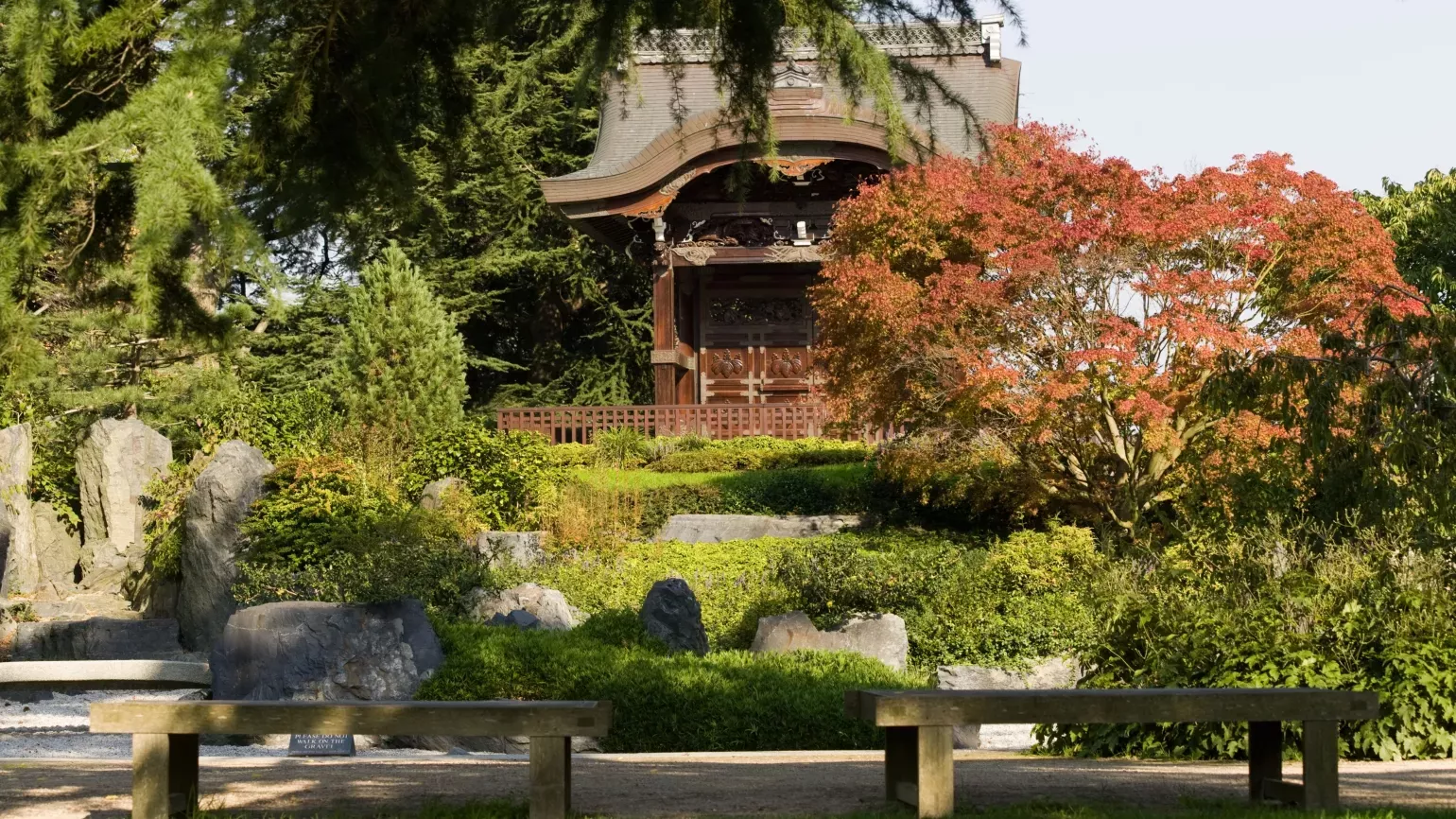
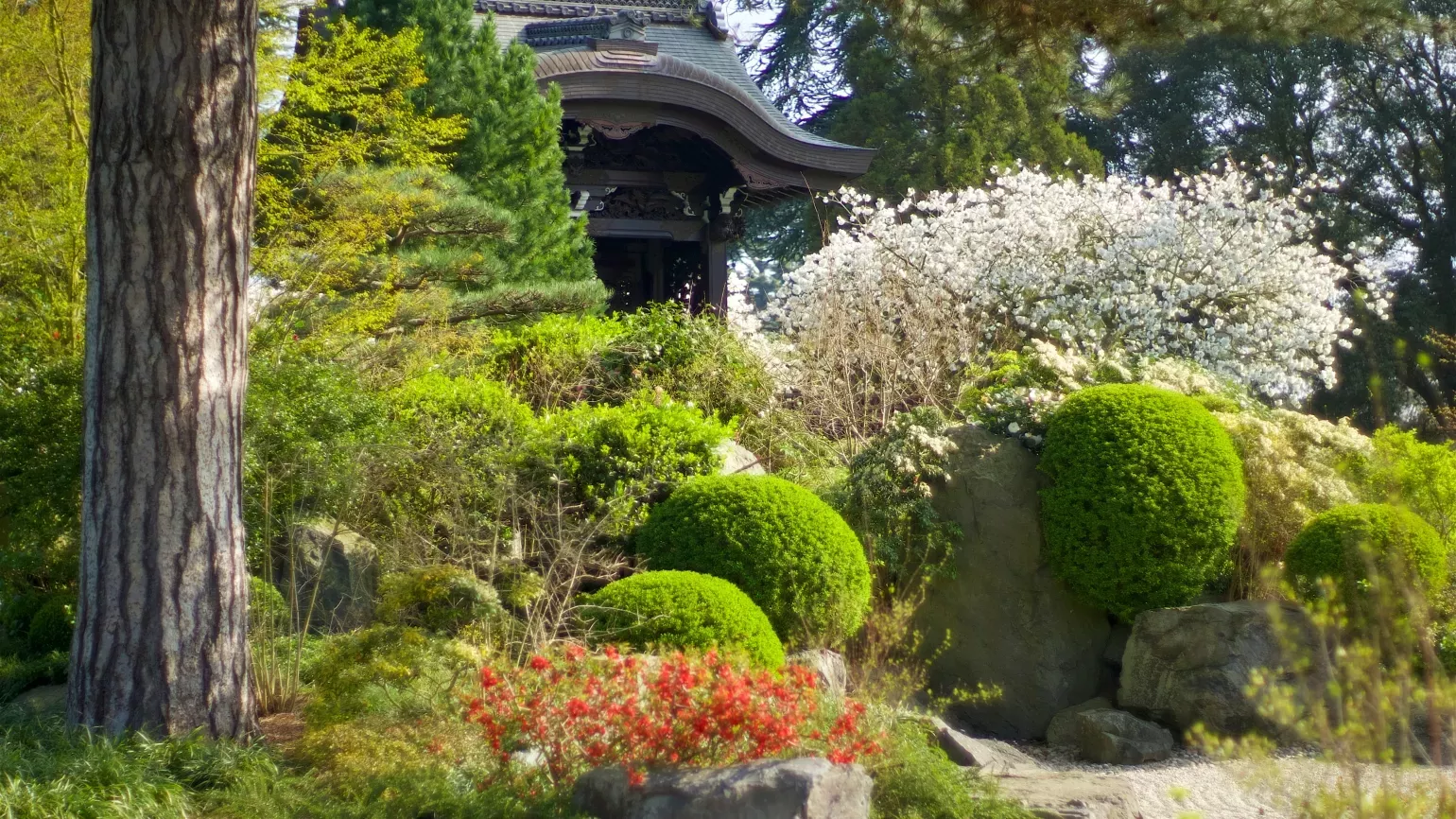
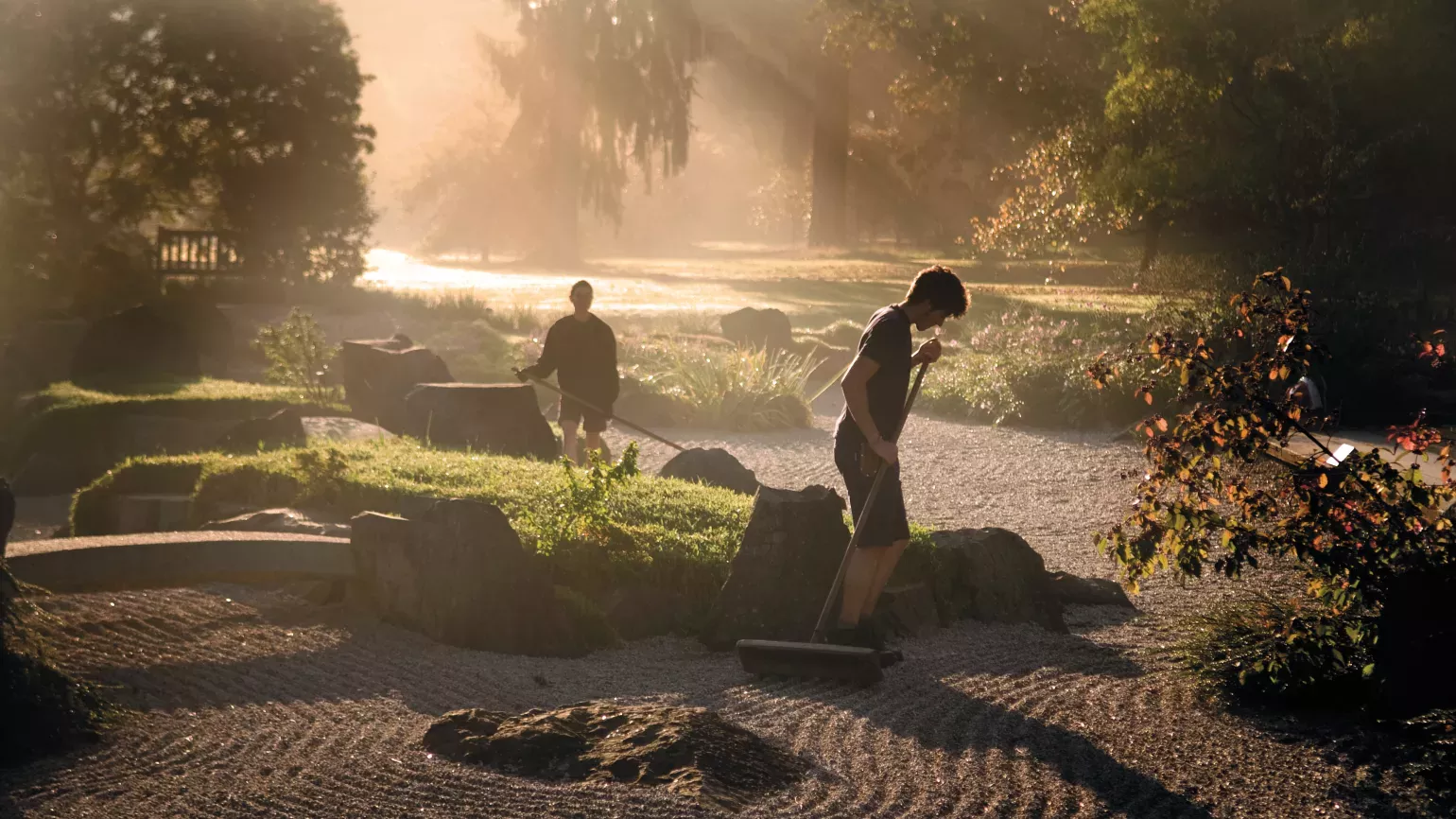
The Garden of Harmony unites the two landscapes. Japan’s mountain regions are represented by stones and rock outcrops, interplanted with shrubs. The plants include neatly clipped low-lying hedges of Rhododendron ‘Mother’s Day’, and the Japanese anemone (Anemone x hybrida).
The landscape was designed by Professor Fukuhara of Osaka University and laid out in 1996 following restoration of the Japanese Gateway.
Hidden highlight
Chokushi-Mon (Gateway of the Imperial Messenger) is a near replica of the Gate of Nishi Hongan-ji (Western Temple of the Original Vow) in Kyoto, Japan.
Created for the Japan-British Exhibition held at White City in London in 1910, the Japanese Gateway is built in the architectural style of the late-16th century Momoyama (or Japanese rococo) period.

The finely carved woodwork of the Gateway is embellished with stylised flowers and animals. The most intricately carved panels depict an ancient legend about the devotion of a pupil to his master.
Nearest entrance
Lion Gate
Visiting the Japanese Landscape
We may occasionally need to close attractions for maintenance or visitor safety: check for planned closures and visitor notices before you visit.
Discover more of Kew
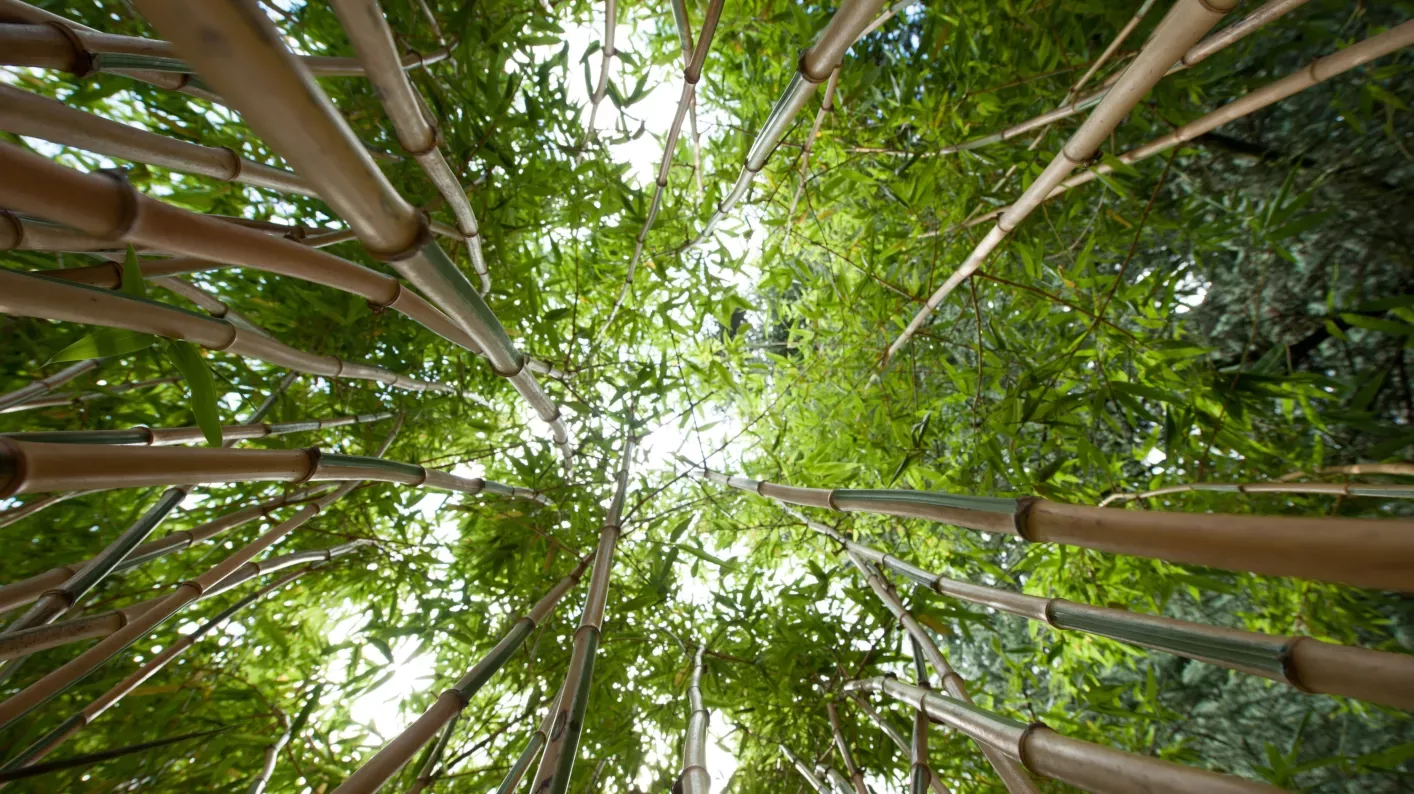
Bamboo Garden and Minka House
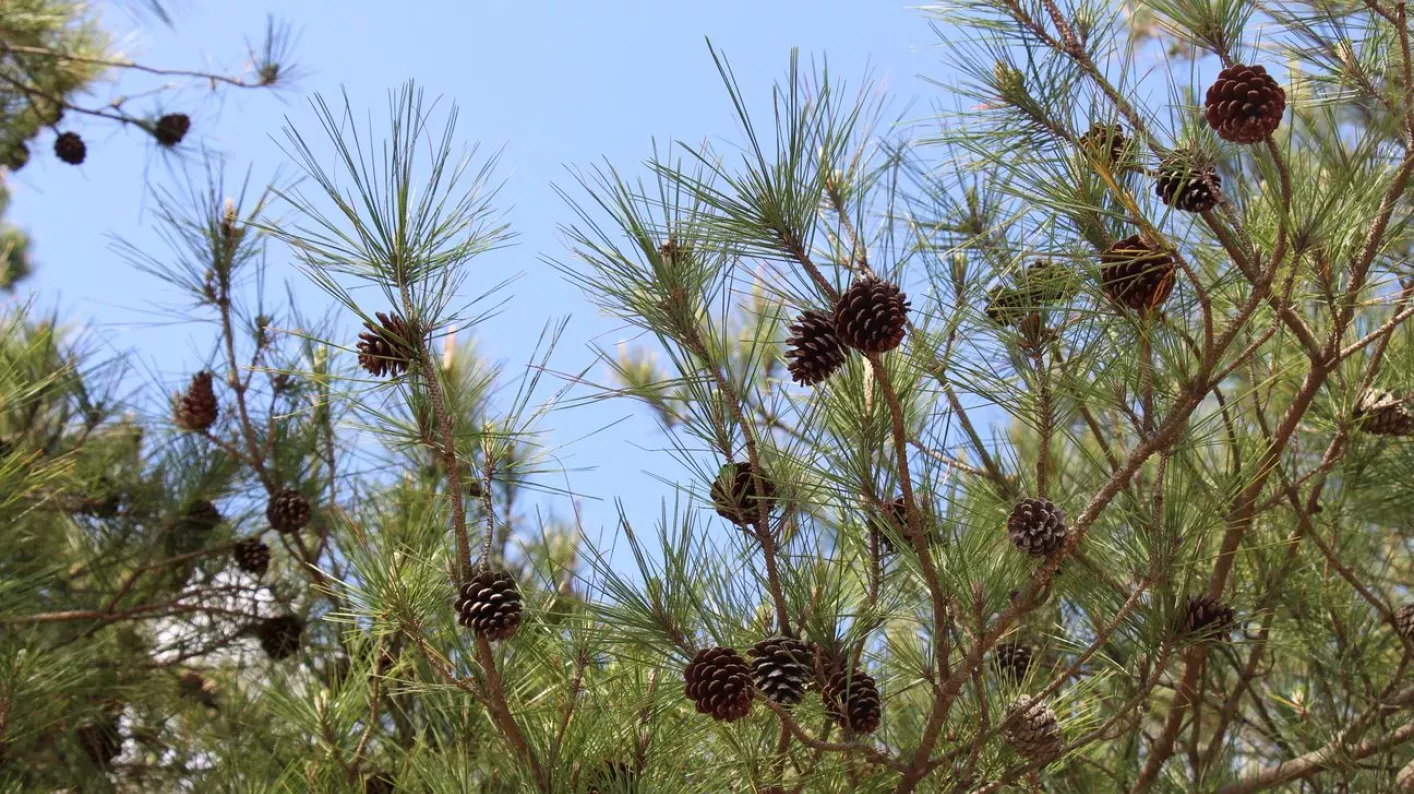
A blossoming partnership in Japan
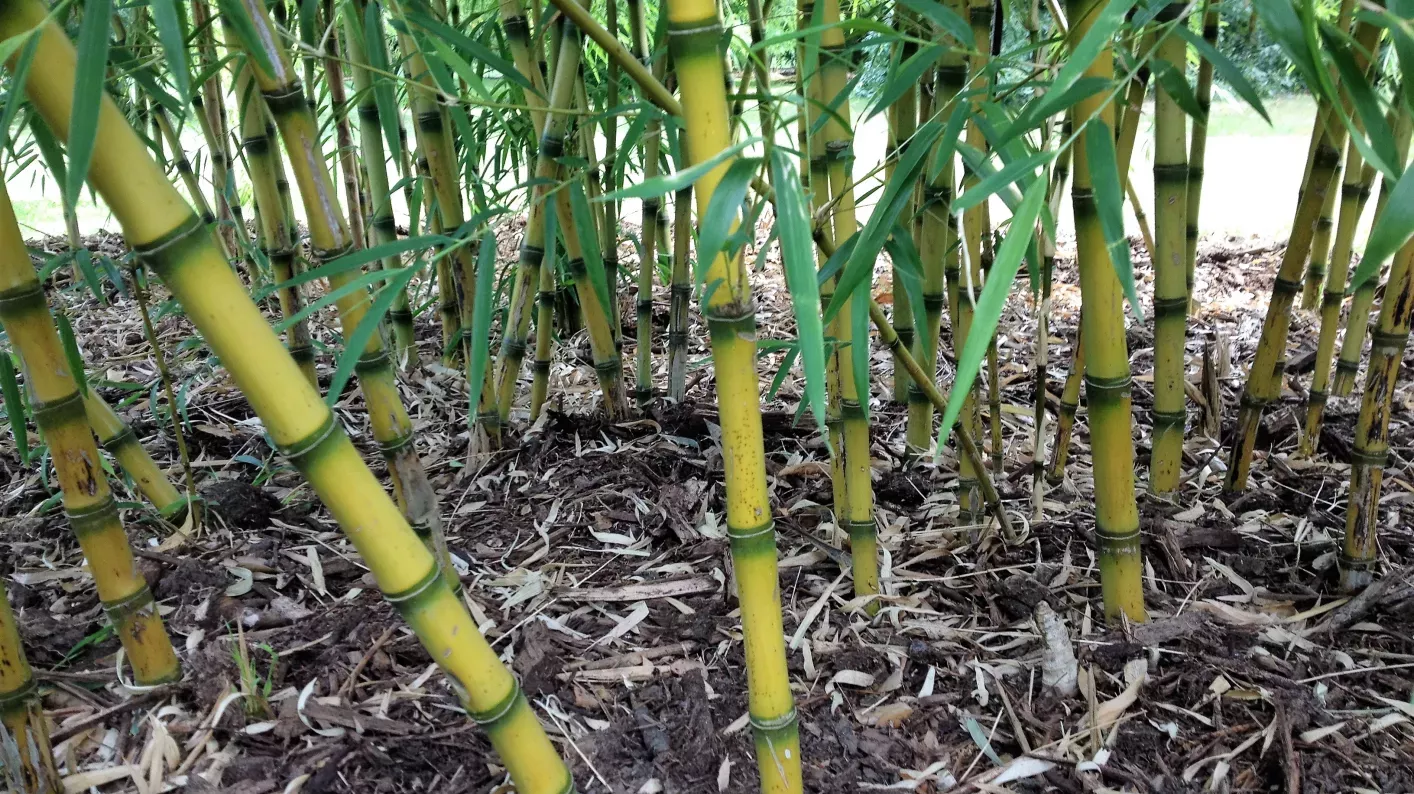
.jpg2e64.webp)
.jpgc352.webp)
.jpg8fbf.webp)
.jpgc9c2.webp)